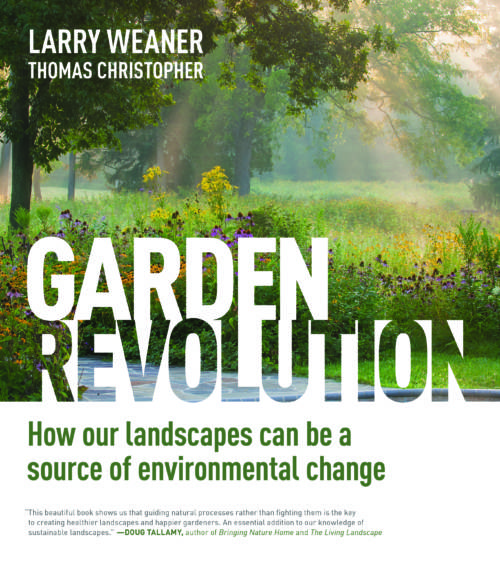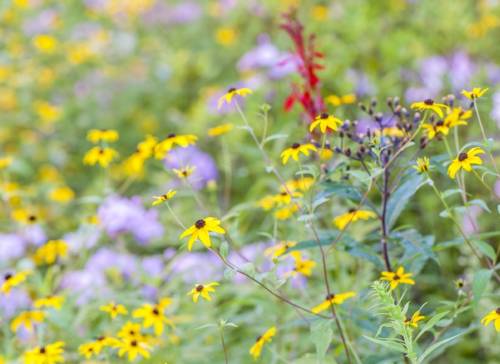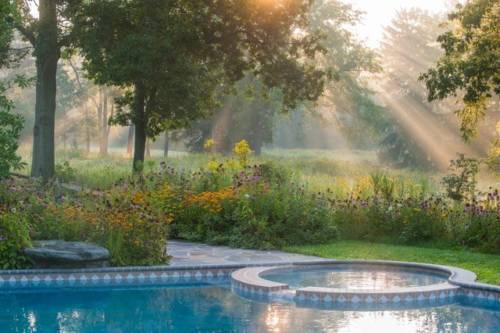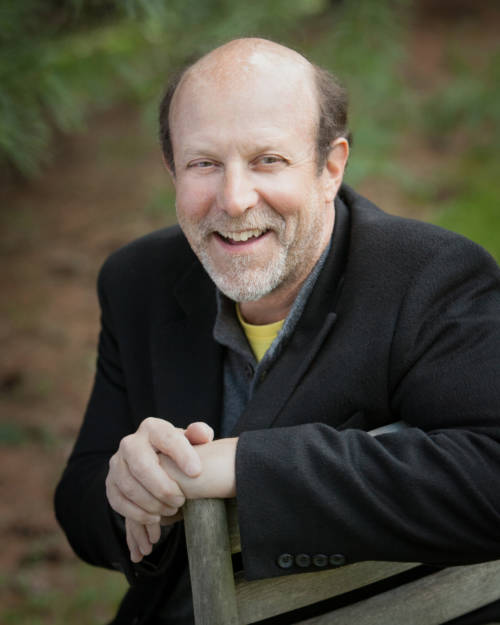Larry Weaner’s Garden Revolution and How Landscapes Can Be a Source of Environmental Change
Larry Weaner is a leading figure in North American landscape design, renown in environmental spheres for his thoughtful ability to manicure gardens so that they integrate with, rather than detract from, the native landscape. His firm, Larry Weaner Landscape Associates, is known for their ability to combine ecological principles with traditional garden design– a penchant that has led Weaner to receive the top three design awards from the Association of Professional Landscape Designers. Weaner’s latest book, Garden Revolution: How Our Landscapes Can Be a Source of Environmental Change is a thoughtful meditation on ecology, garden design, and theory of native landscapes.

On Thursday, September 29th, Weaner will be giving a talk at The Gardens at Heather Farm— part of the Garden Conservancy’s beautiful dialogue series that Garden Collage is proud to support. In advance of Weaner’s talk, we spoke with the heavily-awarded landscape designer to discuss the intersection of environmentalism and fine gardening, and to learn how each of us (and our intimate relationships with nature) can be harnessed to encourage environmental improvement without sacrificing a meaningful use of land.
GC: How did you get into landscape design?
LW: Early on, in my childhood, I don’t think I had a love of plants per se, but I was very into finding wild, lost places– the kind of outdoor places that would make you feel almost as if you were the first human that ever got there. Which obviously has never been the case in my life, at all– but that was the goal. I would find a little scrap of land and go hide in the shrubs or look for Indian arrowheads, the likes of which I did find along the railroad tracks.
I got introduced to the landscape profession as a summer job after my last year of high school. It was outside, and there were trees involved, so it appealed to me. It was a tiny company designed and built by Eugene Varady– he was a very interesting guy and very creative. He was the one who got me interested in this profession, which led me to go to school for Environmental Horticulture.
GC: What happened after you got out of school?
LW: I got my first job at Weston Nurseries, which is a very well known nursery outside of Boston, and I was there for five years. They were known for growing the widest selection of plants in the country at the time, including exotic plants. They had a very intense interest in native plants, which, at the time in the 70’s, most people didn’t really care about– so I learned a lot.
GC: You are known for combining ecological design with traditional gardening principles. What are some of the first elements that you consider when working with a new landscape?
LW: The first thing that you should do is ask yourself, “Where am I standing, ecologically speaking?” It’s not the state, it’s not the county, but “What ecosystem am I in?” that matters. Within that question also ask yourself, “What habitat type am I working with or living in?” There might be swampy woods and upland fields on the same property, and they are two different things.
“The first thing that you should do is ask yourself, ‘Where am I standing, ecologically speaking?’ It’s not the state, it’s not the county, but ‘What ecosystem am I in?’ that matters.”
Determining “what are the types of plants that would normally grow in this place as it current is” is the first step. And if the landscape has been so altered by human activity that it no longer resembles that place, what is the ecosystem type that does most resemble it?
GC: How has the perspective on this process changed in the years that you’ve been doing this work?
LW: This is a different thought process than what we’re taught in typical horticultural programs. If you’re planting a little garden around a mailbox, you’re not going to go through this entire process because the space is too little. But I’ve had my own business since ’82, and there’s no question that now there’s more of an interest in, say, pulling invasive plants– it’s a total sea change from 15 years ago.
GC: After you’ve assessed the environment, what comes next with respect to designing plants for the landscape?
LW: First we determine what the physical attributes of the place are and what plants do well with these physical attributes. Next comes an understanding of the process of change. In nature, plants don’t remain static; they change over time. Plants come in, plants leave, and plants proliferate in numbers. That’s part of the system. This awareness can be incorporated into garden design in really concrete ways. Even more important than understanding what plants work well is understanding what forces are working for them and what forces are working against them, and then manipulating those forces to achieve the type of end product you’re looking for.
GC: Do you have a specific example of this from a past project that stands out in your mind?
LW: There was a field in Salt Point, New York, about an hour and a half outside of New York City, on a fairly substantial-sized property. Much of it was open and mowed, but they had a 14-acre field that was covered in gray dogwood, which is a beautiful and wildlife-friendly but very aggressive, thicket-forming shrub. The client really wanted an open landscape that you could walk into and out of, so they were envisioning more of a grassland or meadow. The obvious thing to do there would be to kill the shrubs and plant a meadow. However, as I was investigating, I noticed little bluestem grass among the dogwood.
“Nothing was planted and nothing was sprayed, but since we understood succession, the plants involved, and how to set a goal to exploit the different growth cycles between the two, we were able to steer it towards what we wanted it to be.”
Because I understood the process of succession, I knew what occurred here: it was probably pasture-grazed because it was ledgey, and would’ve been difficult to cultivate, and also it came back in native vegetation (gray dogwood is also native). It had been less disturbed, so it was following the native trajectory. The successional process is grassland- to herbland- to shrub thicket- to pioneer forest- to canopy forest. So, an earlier stage would’ve been a little bluestem field. And they wanted a little bluestem field– that’s what it used to be. I could kill the shrubs and plant little bluestem, or I could figure out a way to actually turn the process of succession backwards. The way to do that was to look at the two plants: one that I’m managing for (the little bluestem) and the other that I’m managing against (the gray dogwood).
GC: What does the process look like?
LW: The gray dogwood is a nice plant, and I don’t want to completely decimate it; I just want to go back in time where maybe it was 15% encroached by gray dogwood and the remaining 85% was open grassland dominated by little bluestem– that’s my goal. So I mark off about 15% in gracefully-arranged packages where I’m going to leave the gray dogwood, and everything outside of that gets mowed aggressively in the spring and not at any other time of year. This is because little bluestem is inactive in the spring; it grows primarily in hot weather. The gray dogwood– which we’re managing against– grows primarily in the spring and not as much in the hot weather. If you mow it in the spring aggressively, the gray dogwood will be in its growth period and will be continually getting cut back, but the little bluestem isn’t growing yet and will not be getting cut back. Now if you stop mowing at the onset of summer, the gray dogwood doesn’t come back as strong because its not its primary growing season, but the little bluestem that’s still in there can come up. So a period of a few years of this aggressive spring mowing and no mowing basically converted those areas to little bluestem fields out of gray dogwood fields because of this management technique. Nothing was planted and nothing was sprayed, but since we understood succession, the plants involved, and how to set a goal to exploit the different growth cycles between the two, we were able to steer it towards what we wanted it to be.
GC: Wow! How much man power did this require?
LW: It’s important to remember that this process was managed by an elderly gentleman using a walk-behind machine. Other than me marking the gray dogwoods to be left and putting together the protocol, all of this was done by one guy and a simple machine. That’s an extreme case, but if you didn’t have the intellectual capacity to unlock a procedure, it would’ve never happened. It’s important to recognize opportunities in the landscape.
Garden Revolution: How our Landscapes Can Be a Source of Environmental Change was co-authored by Larry Weaner and Thomas Christopher. It is now available from Timber Press. For more information on the September 29 event, visit the Garden Conservancy’s website.



































